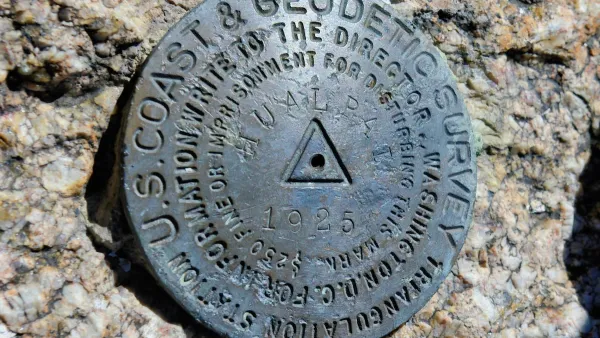Journalists at the Center for Investigative Reporting undertook the herculean task of mapping the extent of the secretive and sometimes strange fence between the United States and Mexico.
Michael Corey writes of his experience attempting to obtain information about the exact extent of the series of fences that makes up the infamous U.S.-Mexico border fence. The project grew out of the Borderland storytelling project that the Center for Investigative Reporting undertook with NPR.
“Journalists at CIR have been trying for more than three years to obtain accurate, detailed mapping data showing the location of the border fence system. The fences – it's more accurate to say there are many – have cost taxpayers many millions of dollars and are key pieces of border security infrastructure. They're also a potent symbol that chafes at our Mexican neighbors.”
The task of finding the data proved more difficult than expected. “We filed several Freedom of Information Act requests with U.S. Customs and Border Protection, and after several appeals, we received limited data showing where individual fence segments start and end. But we were told repeatedly that the actual lines showing the details of the fence segments were sensitive law enforcement information that could give away secrets to drug cartels, illegal border crossers or terrorists.”
Through no small amount of perseverance, and old-fashioned, gum shoe Google Earth exploration, Corey states what his team has achieved: “The result: We now have what is – as far as we know – the most complete and detailed map of the border fence system that is publicly available.” The map is in OpenStreetMap, and the article also has Google Earth images showing how difficult the fence is to track across the terrain of the American Southwest.
FULL STORY: The surprising tools CIR used to map the US-Mexico border fence

Planetizen Federal Action Tracker
A weekly monitor of how Trump’s orders and actions are impacting planners and planning in America.

Maui's Vacation Rental Debate Turns Ugly
Verbal attacks, misinformation campaigns and fistfights plague a high-stakes debate to convert thousands of vacation rentals into long-term housing.

San Francisco Suspends Traffic Calming Amidst Record Deaths
Citing “a challenging fiscal landscape,” the city will cease the program on the heels of 42 traffic deaths, including 24 pedestrians.

Amtrak Rolls Out New Orleans to Alabama “Mardi Gras” Train
The new service will operate morning and evening departures between Mobile and New Orleans.

The Subversive Car-Free Guide to Trump's Great American Road Trip
Car-free ways to access Chicagoland’s best tourist attractions.

San Antonio and Austin are Fusing Into one Massive Megaregion
The region spanning the two central Texas cities is growing fast, posing challenges for local infrastructure and water supplies.
Urban Design for Planners 1: Software Tools
This six-course series explores essential urban design concepts using open source software and equips planners with the tools they need to participate fully in the urban design process.
Planning for Universal Design
Learn the tools for implementing Universal Design in planning regulations.
Heyer Gruel & Associates PA
JM Goldson LLC
Custer County Colorado
City of Camden Redevelopment Agency
City of Astoria
Transportation Research & Education Center (TREC) at Portland State University
Jefferson Parish Government
Camden Redevelopment Agency
City of Claremont




























